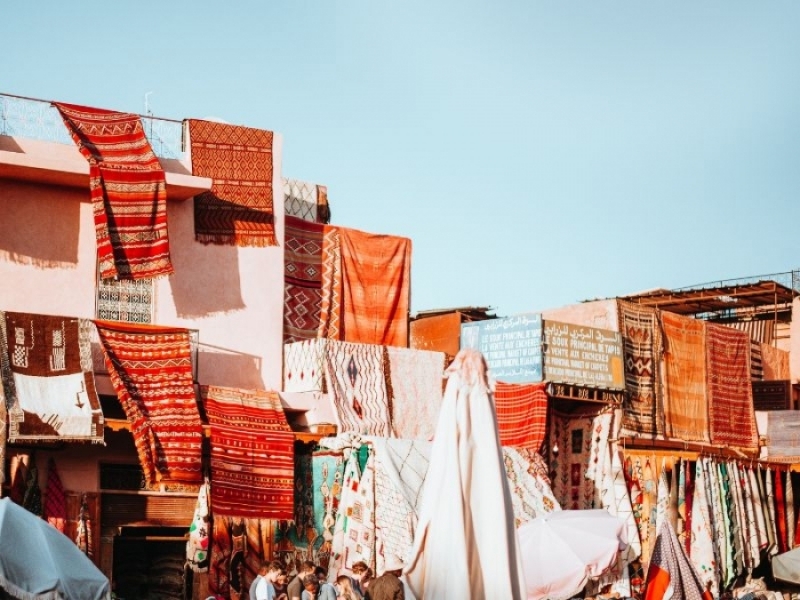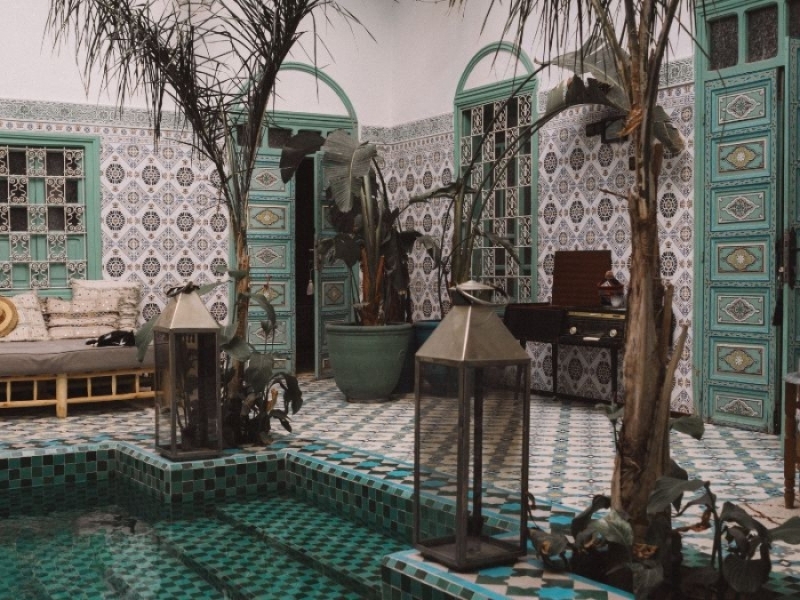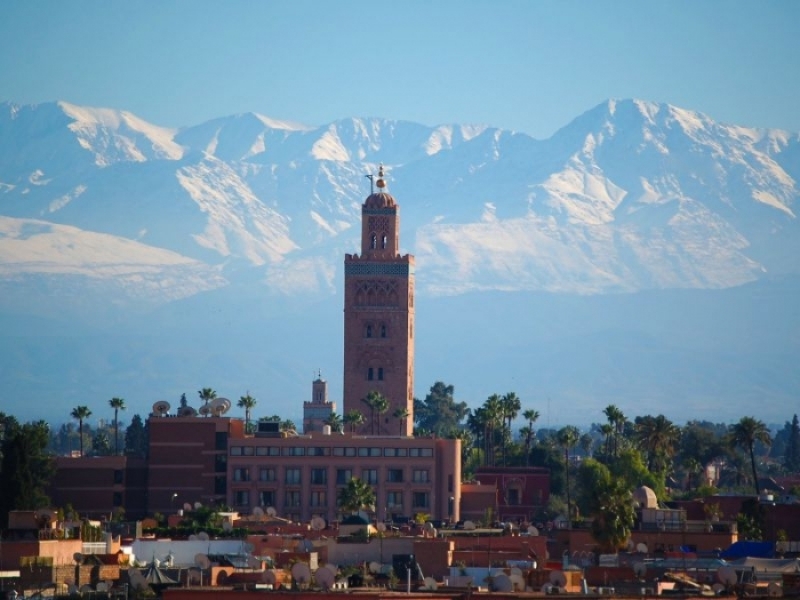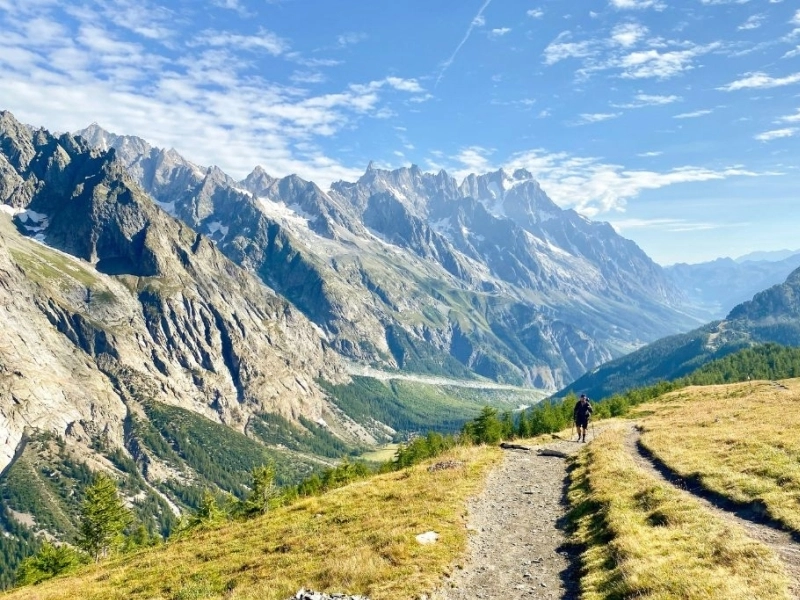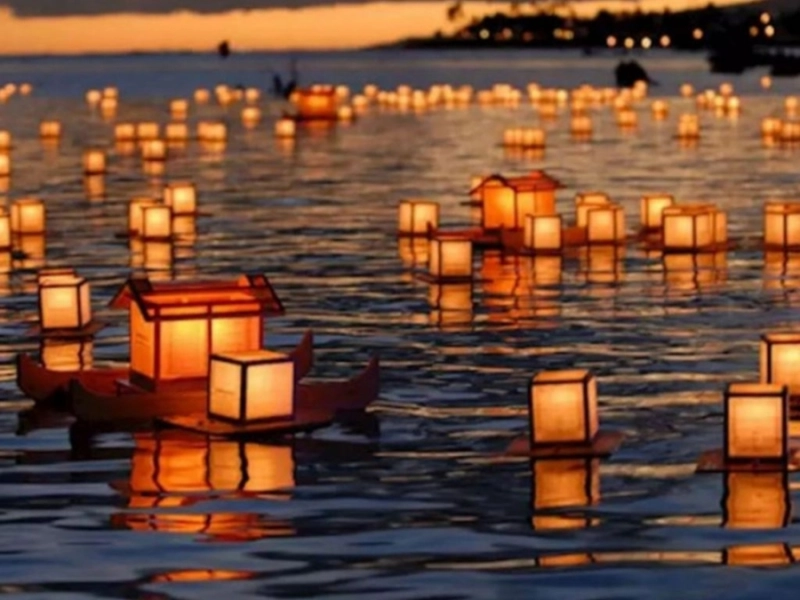News and Testimonials
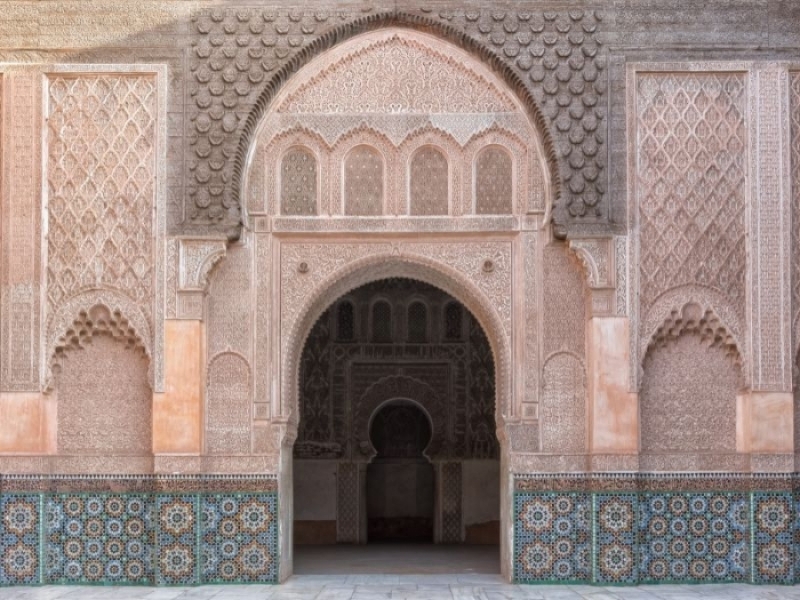
The Most Captivating And Interesting Things To Do In Marrakech
Separated from the Sahara Desert by the Atlas Mountains, Marrakech was built in 1070 as the capital of the Almoravid Empire. Formed from the earth, red mud buildings have given it the nickname The Red City. But 500 years after its inception, wealthy Sultans added to the architecture with sumptuous palaces and ornate tombs – the combination of which provides a myriad of captivating things to do in Marrakech. Marrakech is made special by the colourful mix of Arab and Berber cultures. Experience the vigour of stall holders expertly singing their own praises while strolling the crammed souks in the medieval Medina. Wander the maze of narrow laneways as the call to prayer rises above the clamour of artisans crafting their wares and the scent of spices lingering in the air.
1 – ALI BEN YOUSSEF MADRASA (MEDERSA BEN YOUSSEF)
The local mosques in Marrakech are said to contain some of the city’s most impressive artistry. But as they are closed to non-Muslims, the best way to get educated in the splendour of Islamic design is at Ali Ben Youssef Madrasa.Founded in the 14th century, the madrasa was at one time the largest Qur??nic school in North Africa. Following Moroccan and Andalusian architecture, the large central courtyard is breathtaking. A large shallow reflecting pool, cut into the beautifully tiled floor, is surrounded by ornate walls covered in zellij (mosaic tilework) and calligraphic friezes.At one end, a prayer niche is elaborately decorated in stucco (fine plaster) with carved latticed balconies above. The student rooms surrounding the courtyard are completely devoid of decoration adding contrast and a mystical allure to Ali Ben Youssef Madrasa.
2 – GET LOST IN THE CENTRAL SOUKS
The central souks of Marrakech are open-air markets tucked into a labyrinth of laneways. Packed with a myriad of stalls they give the medieval medina its distinctive energy. Losing yourself strolling the souks is a unique lost-in-time experience, and one of the most invigorating things to do in Marrakech.Many of the stallholders still use traditional methods to produce artisanal wares while others are more focused on the tourist trade. The souks are organised (roughly) by their respective crafts. Souk Haddadine is the metalwork section where pots, trinkets and jewellery are produced to the sound of beating tin. Souk Cherratine wafts to the aroma of freshly made leather goods while Souk des Babouche has row upon row of colourful slippers. The best photo opportunities are at Souk des Teinturiers, the wool dying souk; and, La Criée Berbère the proud home of Berber carpets.
3 – RAHBA KEDIMA SQUARE
The tradition of mint tea in Morocco is a timeworn tradition of hospitality. Served upon arrival in a riad or at mealtimes, the tea is often prepared by the men of the house via a tradition that has been passed down through the centuries.Watching the long pour from an ornate teapot held high above a tiny glass is one of our fondest memories of travelling in Morocco.One of the best places to soak up this tradition in Marrakech is at Café des Épices. Perched on the edge of buzzing Rahba Kedima Square, this lively café is surrounded by stalls and offers the perfect vantage point to watch life unfold in the medina.The constant source of the hubbub, prime people watching, and delicious mint tea combine to create one of the best things to do in Marrakech.
4 – THE MELLAH
The Mellah is the old Jewish Quarter of Marrakech. It was created by Sultan Abdallah al-Ghalib of the Saadian dynasty in 1558. The purpose was to provide protection to Jews fleeing persecution in the Iberian Peninsula, as required by Sharia law at the time.Restored several times over the years, the maze of tight laneways has less of the craziness of the medina, and more characteristics of an interesting local neighbourhood.Don’t miss the Grand Bijouterie, an ornate jewellery arcade that still sells gold by the ounce. The palm-lined square of Place des Ferblantiers is a scenic meeting point with small souks selling spices, tin lamps and homewares.Finally, Slat Al Azama synagogue with its courtyard decorated in a blaze of blue, and the Jewish Cemetery, are a poignant reminder of how many Jews once called Marrakech home.
5 – BAHIA PALACE
With a symmetrically pleasing courtyard, intricate woodwork and an excessive use of Italian marble, the Bahia Palace is one of the most lavish attractions in Morocco. It was originally built in the 1860s then expanded and renovated with more flair and extravagance over the early 1900s.Although only a few of the 150 rooms are open to the public, it’s enough to get a feel for the magnificent decorations, said to be some of the finest Moorish and Andalusian architecture in Morocco. Rooms are decorated with carved cedar ceilings, woven silk panels and stained-glass windows.The grandeur of the palace is best demonstrated in the courtyards. Lush plants fill white-washed gardens with central fountains typical of Moorish design. The showpiece however is the huge Grand Courtyard with geometrical patterns stretching across an expansive marble floor surrounded by wooden galleries.
6 – VISIT A HAMMAM
Most Moroccans attend hammam (public steam bath) every week to cleanse the skin and purify the mind before prayer. As one of the 5 traditional elements in every neighbourhood alongside the mosque, school, bakery and fountain, the hammam is central to cultural and religious life in Morocco.Visiting is not only an invigorating thing to do in Marrakech but a great way to dip into Moroccan culture. However, experiences can differ greatly depending on the type of hammam you visit.A local hammam is very cheap and can be a great way to really immerse yourself in the culture. However, they are not specifically set up for tourists, so you’ll need to purchase soap, a mitt and a bucket. Language can also be a challenge.There are westernised hammams that offer more of a pampering experience. Hammam de la Rose has a great range of services in a calm space at a decent price. To really splurge, the gloriously decorated Mamounia Hotel has one of the most luxurious hammams in Marrakech. Booking ahead is essential.Our recommendation would be to try an old-world scrub in Hammam Mouassine. This tourist-friendly venue has an English-speaking host with a menu of services to choose from. It’s clean and comfortable but housed in a traditional building that is also used by locals, so it has a nice local Moroccan feel.
7 – EXPLORE THE FONDOUKS
A fondouk is a medieval urban hostel designed for travelling traders who needed somewhere for themselves, and their camels, to sleep while they plied the prosperous caravan route from the Sahara. Ground floor stables were set around a small courtyard with lockable chambers on the first floor for storage and sleeping.In their time, fondouks were richly decorated, each one designed to attract specific merchants based on their cultural heritage.After falling into disuse, many of them were converted into workshops for artisans to operate from. Some, however, have been sympathetically restored while others have been converted into charming restaurants such as the very popular Le Fondouk.Most of the foundouks in Marrakech are spread around the El Baroudiyine area on Route Sidi Abdelaziz where the traders had easy access to the souks north of Jemaa el-Fna. Pop your head into a few and enjoy the more serendipitous nature of visiting Marrakech.
8 – SAADIAN TOMBS
The Chamber of the Twelve Columns in the Saadian Tombs is considered the pinnacle of Moroccan architecture. The intricately designed space houses the tombs of three of the most important Sultans of the Saadian dynasty. Their elaborate final resting places – a series of beautiful burial rooms decorated with Italian marble, arches lined with gold, richly carved oak and extensive tiling – signify their importance to society.The extravagance continues in the mausoleum for Sultan Ahmed al-Mansour’s mother, but his wives and advisers were not granted such luxurious final resting places. You can find their tombs outside in the garden.Altogether there are about 170 tombs in the complex set around a beautiful garden. Queues can be long, so come early if possible or join a tour. Nevertheless, it’s one of the most beautiful things to see in Marrakech.
9 – LOCAL NEIGHBOURHOODS OF MARRAKECH
As a compact city, it’s easy to explore beyond the very popular tourist areas in the medina. While getting lost in the labyrinth is one of the unmissable experiences in Marrakech, just outside the centre, real Moroccan life unfolds through a very traditional way of life.One of our favourite areas is Rue Errachidia just south of the Saadian Tombs. In the early morning, the meat and vegetable stalls are a hive of activity as locals gather their ingredients for the day. Even though its metres from one of the must-do sights in Marrakech you’ll probably be the only tourist around.The other area to explore is Bab Doukkala to the west of the Medina. Still inside the medieval walls, this traditional quarter is perfect in the late afternoon as stallholders start to unwind, the smoke from shisha hangs in the air and the smell of tagine wafts from neighbourhood kitchens.
10 – YVES SAINT LAURENT’S HOUSE
The former home of Yves Saint Laurent is now one of the most popular tourist attractions in Marrakech featuring his house Villa Oasis, a museum to his life’s work, a Berber Museum, and the beautiful Majorelle Garden.The garden was originally designed by Jacques Majorelle, a French artist, who fell in love with the rich blue used in Berber houses and made it a feature in his own home and garden. It had such a mesmerising effect on him that shortly before his death he patented the colour which still carries his name.Majorelle Blue continued to feature heavily after the property was purchased and restored by Yves Saint Laurent in the 1980s. It’s a wonderful complex to stroll around. Even for non-fashionistas such as we, the museum to Yves Saint Laurent’s design work was interesting and the video of his life compelling. The on-site restaurant is pretty good as well.
11 – MUSÉE DE MARRAKECH
The Marrakech Museum is housed in the Dar Mnebhi Palace and contains an assorted collection of weapons, carpets and pottery from different regions of Morocco. The main reason to pop your head in, however, is to see the impressive central courtyard.Typical of Moroccan architecture from the 19th century, the central courtyard was once an open riad with a garden of planted trees. Today however the garden has been paved over and embellished with several fountains decorated in colourful tiles and topped off with cedarwood panels.The ostentatious chandelier hanging in the courtyard is a great focal point in this excellent photo spot in Marrakech.
12 – FLEA MARKETS
If the tourist-focused wares of the centre souks don’t tickle your fancy, you might be more interested in the flea markets on the outskirts of the medina.With regular day-to-day items on sale and few tourists to be seen, it’s a much more Moroccan shopping experience. You’ll also be left alone to browse at your leisure without the constant haggling from vendors – a common experience in the souks.The best local market is around Souk el-Khemis in the northwest of the medina. It would be hard to think of any day-to-day items that you couldn’t find here as they sell everything from dishcloths to donkeys.Nearby, on the edge of Jardin De Bab el-Khemis, you’ll find a more traditional flea market selling bric-a-brac, vintage old mobile phones and well-worn clothes.
13 – JEMAA-EL FNA
Jemaa el-Fna is the central square of Marrakech and, along with the central souks, is the life and soul of the city. It’s at its best at sunset when the light fades, the food stalls swing into action and an exotic magic descends on the square.The best way to experience the drama is to grab a spot on the terrace at Le Grand Balcon du Café Glace. Three floors up on the edge of the square, the balcony is perfectly positioned to witness the sunset on Koutoubia Mosque as the full scale of activity on Jemaa el-Fna gets underway.Having a meal at one of the stalls in Jemaa el-Fna is an unmissable thing to do in Marrakech. Not because the food is great, but because the vendors will charm even the most jaded of travellers with their witty banter. The entertainment all around is a thoroughly immersive experience in Marrakech.


